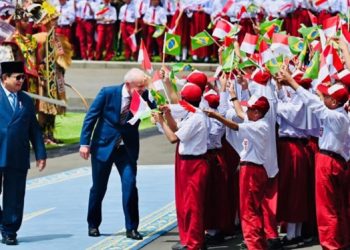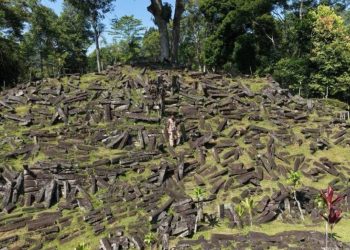Jakarta, Indonesia Sentinel — Indonesia’s Minister of Culture, Fadli Zon, has unveiled the government plans to restructure and restore the Gunung Padang Megalithic Site in Cianjur, West Java closer to how it appeared in ancient times
He explained that to achieve this amitious target, the restoration led by a multidisciplinary team of experts will continues until completion.
Fadli said that the initial phase will focus on reinforcing the sides of the site, particularly terraces four and five, which are prone to landslides and soil movement.
“We’ll stabilize these vulnerable sections to strengthen the structure of this original Indonesian stepped pyramid,” Fadli said.
He added that displaced or buried stones would be carefully excavated and cleaned to expose the foundation of the ancient structure. Once completed, the restoration work will proceed to the main terraces.
“Right now, much of the site is still covered, but once it’s cleaned and reorganized, the structure will become much clearer,” said the Gerindra Party politician.
Fadli emphasized that the restoration must be carried out cautiously, taking into account seasonal and weather conditions, since Gunung Padang sits atop a landslide-prone hill. “We have to be careful and avoid working during the rainy season,” he noted.
Read Also:
The minister expressed hope that the ongoing research, excavation, and restructuring would eventually reveal the complete form of Gunung Padang as an authentic Indonesian pyramid heritage.
According to Fadli, the restoration and studies will be conducted in stages. Findings from each phase will inform further archaeological research. “As the head of the archaeological team has explained, this will be a continuous process,” he stated.
Experts have already conducted several studies, including excavations reaching depths of up to seven meters in some areas.
“These studies will help us understand the site’s original structure and layout as it was in ancient times,” Fadli said. “Over the years, the site has suffered from landslides and soil shifts, causing parts of it to move or become buried.”
(Raidi/Agung)























